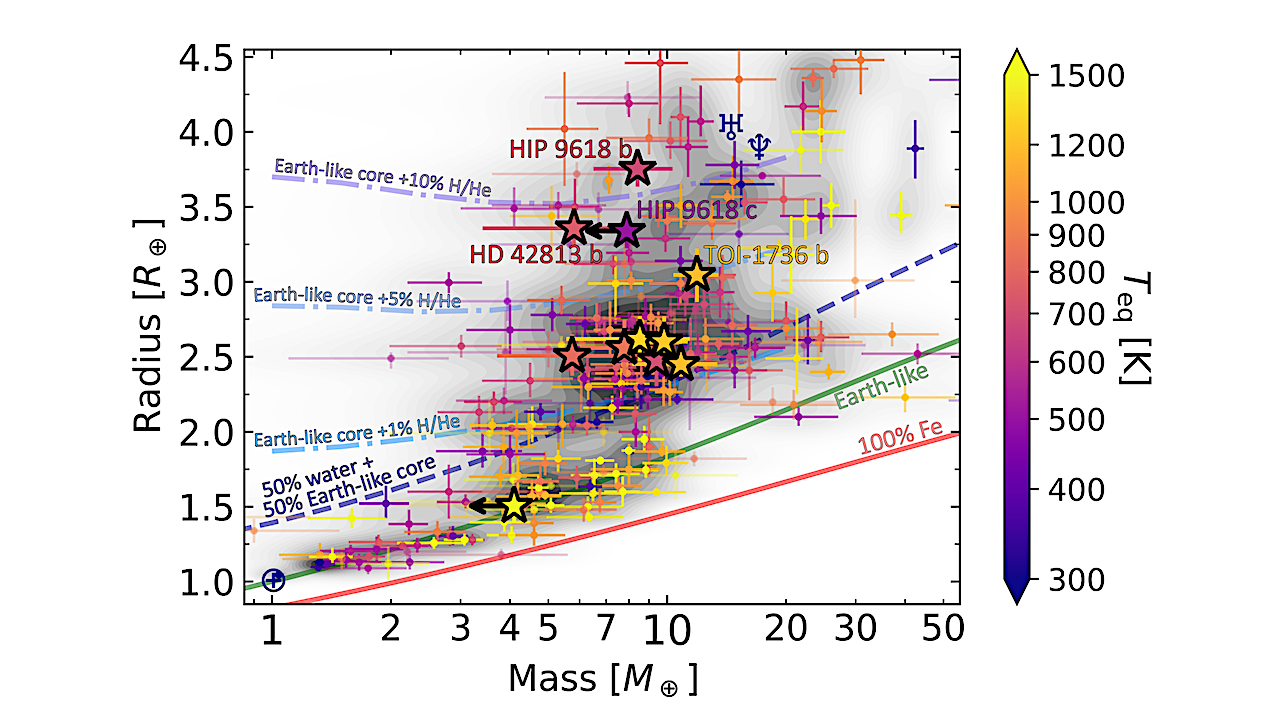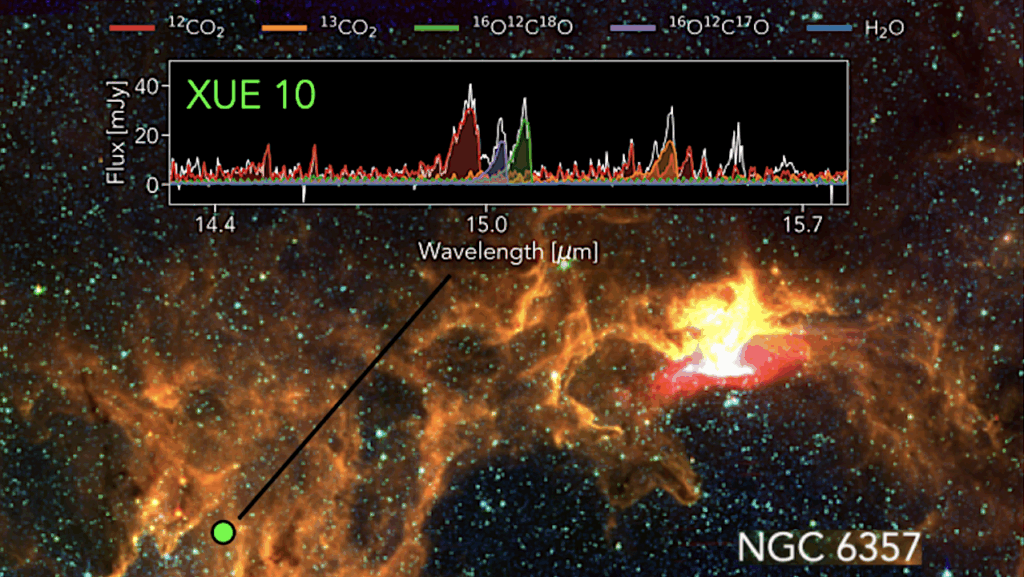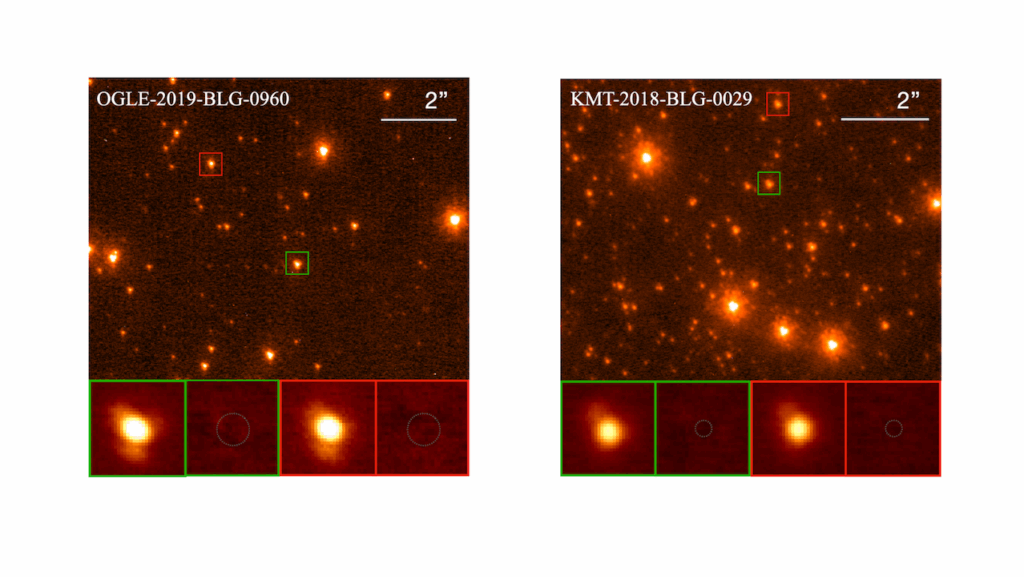The TESS-Keck Survey. XVI. Mass Measurements for 12 Planets in Eight Systems

With JWST’s successful deployment and unexpectedly high fuel reserves, measuring the masses of sub-Neptunes transiting bright, nearby stars will soon become the bottleneck for characterizing the atmospheres of small exoplanets via transmission spectroscopy.
Using a carefully curated target list and more than two years’ worth of APF-Levy and Keck-HIRES Doppler monitoring, the TESS-Keck Survey is working toward alleviating this pressure. Here we present mass measurements for 11 transiting planets in eight systems that are particularly suited to atmospheric follow-up with JWST. We also report the discovery and confirmation of a temperate super-Jovian-mass planet on a moderately eccentric orbit.
The sample of eight host stars, which includes one subgiant, spans early-K to late-F spectral types (Teff= 5200–6200 K). We homogeneously derive planet parameters using a joint photometry and radial velocity modeling framework, discuss the planets’ possible bulk compositions, and comment on their prospects for atmospheric characterization.
In order of increasing TOI number, the systems presented in this work are:
HIP 8152 (TOI-266): a G dwarf hosting two subNeptunes.
HD 42813 (TOI-469): an early-K dwarf hosting one sub-Neptune.
HD 25463 (TOI-554): a late-F dwarf hosting a sub-Neptune and a super-Earth on opposite sides of the radius valley (Fulton et al. 2017; Van Eylen et al. 2018).
TOI-669: a G dwarf hosting one sub-Neptune.
HD 135694 (TOI-1247): an early-K dwarf hosting one sub-Neptune.
HIP 9618 (TOI-1471): a G dwarf hosting two subNeptunes, each with P > 20 d. The system is also host to a massive, distant companion as seen by a linear trend in the radial velocities. The nature of the companion is uncertain.
HD 6061 (TOI-1473): an early-G dwarf hosting one sub-Neptune. The host star also appears to be gravitationally bound to a mid-M dwarf companion (TIC 600433892). The two stars have a sky-projected separation of about 200 AU.
TOI-1736: a slightly evolved G star hosting one sub-Neptune and one nontransiting, super-Jovianmass planet on a moderately eccentric orbit. The system is also host to a massive, distant companion as seen by a linear trend in the radial velocities. The nature of the companion is uncertain.
Joseph M. Akana Murphy, Natalie M. Batalha, Nicholas Scarsdale, Howard Isaacson, David R. Ciardi, Erica J. Gonzales, Steven Giacalone, Joseph D. Twicken, Anne Dattilo, Tara Fetherolf, Ryan A. Rubenzahl, Ian J. M. Crossfield, Courtney D. Dressing, Benjamin Fulton, Andrew W. Howard, Daniel Huber, Stephen R. Kane, Erik A. Petigura, Paul Robertson, Arpita Roy, Lauren M. Weiss, Corey Beard, Ashley Chontos, Fei Dai, Malena Rice, Judah Van Zandt, Jack Lubin, Sarah Blunt, Alex S. Polanski, Aida Behmard, Paul A. Dalba, Michelle L. Hill, Lee J. Rosenthal, Casey L. Brinkman, Andrew W. Mayo, Emma V. Turtelboom, Isabel Angelo, Teo Močnik, Mason G. MacDougall, Daria Pidhorodetska, Dakotah Tyler, Molly R. Kosiarek, Rae Holcomb, Emma M. Louden, Lea A. Hirsch, Jay Anderson, Jeff A. Valenti
Comments: Accepted for publication in The Astronomical Journal on 2023-Jun-22. 60 pages, 17 Tables, 28 Figures
Subjects: Earth and Planetary Astrophysics (astro-ph.EP)
Cite as: arXiv:2306.16587 [astro-ph.EP] (or arXiv:2306.16587v1 [astro-ph.EP] for this version)
Submission history
From: Joseph M. Akana Murphy
[v1] Wed, 28 Jun 2023 22:39:32 UTC (30,885 KB)
https://arxiv.org/abs/2306.16587
Astrobiology,








